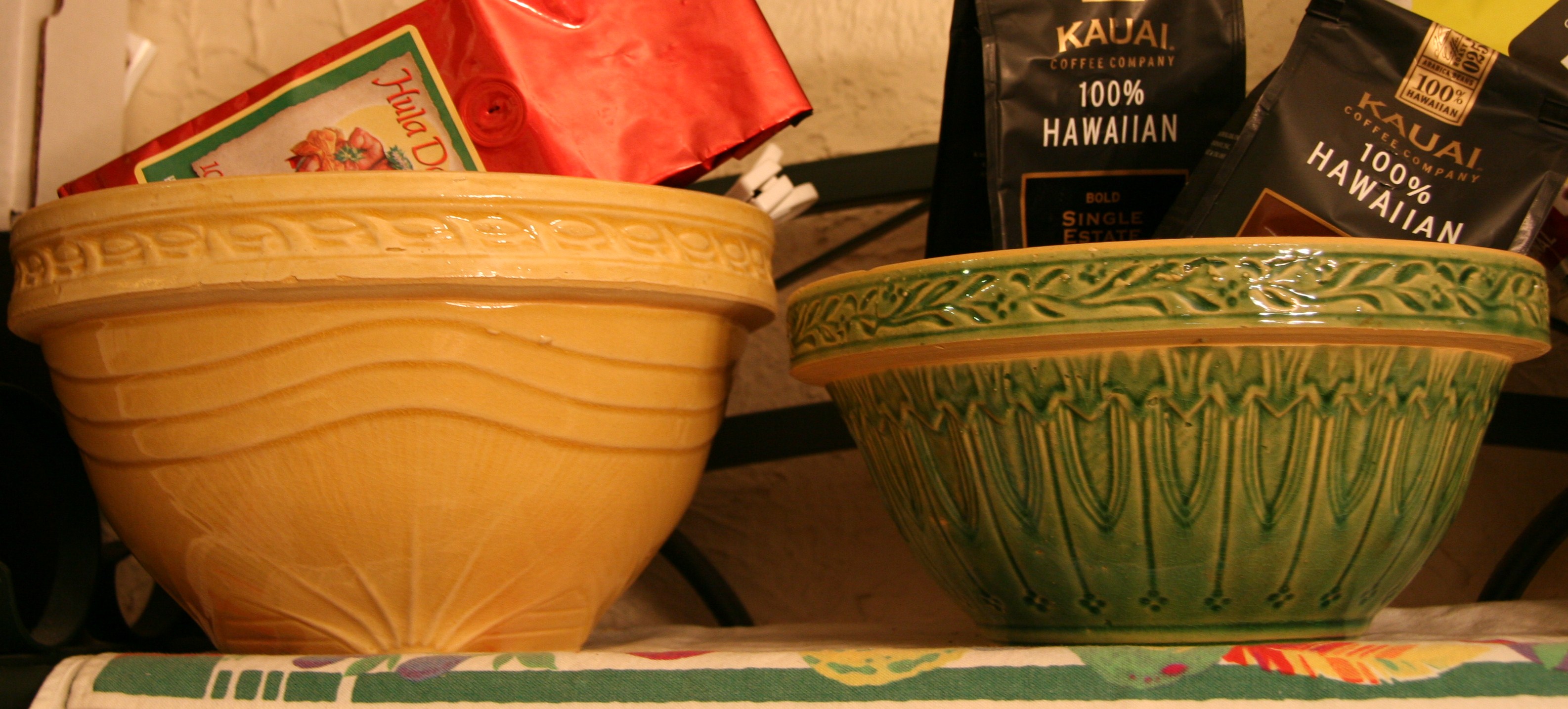Yellowware Mixing Bowls on:
[Wikipedia]
[Google]
[Amazon]
Yellowware, or yellow ware, is a type of

 East Liverpool, Ohio, was the manufacturing base of much of the yellowware used in the United States during the mid- to late 19th century. It has been estimated that "between 1865 and 1885, Ohio alone produced half of America's yellowware".
By the early 20th century, yellowware was no longer fashionable.
East Liverpool, Ohio, was the manufacturing base of much of the yellowware used in the United States during the mid- to late 19th century. It has been estimated that "between 1865 and 1885, Ohio alone produced half of America's yellowware".
By the early 20th century, yellowware was no longer fashionable.
File:Match holder, John E. Jeffords & Co. Philadelphia City Pottery, c. 1870, lead-glazed yellow earthenware, Rockingham glaze - Flynt Center of Early New England Life - Deerfield, Massachusetts - DSC04174.jpg, Match holder, John E. Jeffords & Co. Philadelphia City Pottery, c. 1870, lead-glazed yellow earthenware, Rockingham glaze
File:Inkwell, American or English, yellow earthenware, Rockingham glaze, item HD 2014.4.209 - Flynt Center of Early New England Life - Deerfield, Massachusetts - DSC04181.jpg, Inkwell, American or English, yellow earthenware, Rockingham glaze
File:Pudding dish, Boston Earthenware Manufacturing Company, c. 1860, lead-glazed yellow earthenware, Rockingham glaze, HD 2014.4.159 - Flynt Center of Early New England Life - Deerfield, Massachusetts - DSC04169.jpg, Pudding dish, Boston Earthenware Manufacturing Company, c. 1860, lead-glazed yellow earthenware, Rockingham glaze
File:Bowl, Boston Earthenware Manufacturing Company, Massachusetts, c. 1860, lead-glazed yellow earthenware, rockingham glaze, HD 2014.4.161 - Flynt Center of Early New England Life - Deerfield, Massachusetts - DSC04159.jpg, Bowl, Boston Earthenware Manufacturing Company, Massachusetts, c. 1860, lead-glazed yellow earthenware, Rockingham glaze
earthenware
Earthenware is glazed or unglazed nonvitreous pottery that has normally been fired below . Basic earthenware, often called terracotta, absorbs liquids such as water. However, earthenware can be made impervious to liquids by coating it with a ce ...
named after its yellow appearance given to it by the clay used for its production. Originating in the United Kingdom in the late 18th century, it was also produced in the eastern United States from the late 1920s.
History
Colonists settling in the United States brought European pottery techniques with them. They were limited by the materials available to them, however, and colonial ceramic production was limited to redware and stoneware, with occasional attempts to produce creamware and porcelain. Beginning in the late 18th century, potters in Scotland and northern England began manufacturing vessels of yellow-firing clay. The trade spread to Wales. A fragment of yellowware pancheon was excavated fromKnowles Mill
Knowles Mill is the remains of an eighteenth-century water-powered grain mill, located in the Wyre Forest in Worcestershire, England. The mill has been owned by the National Trust since 1938. The mill and its surroundings feature extant machiner ...
in Worcestershire. By the early 19th century, potters skilled in yellowware manufacture began to emigrate to the United States.
In the United States, production centered on New Jersey, Pennsylvania, Maryland, New England and Ohio. The earliest documented American yellowware was in 1797, with large-scale production starting in 1828 in New Jersey.

 East Liverpool, Ohio, was the manufacturing base of much of the yellowware used in the United States during the mid- to late 19th century. It has been estimated that "between 1865 and 1885, Ohio alone produced half of America's yellowware".
By the early 20th century, yellowware was no longer fashionable.
East Liverpool, Ohio, was the manufacturing base of much of the yellowware used in the United States during the mid- to late 19th century. It has been estimated that "between 1865 and 1885, Ohio alone produced half of America's yellowware".
By the early 20th century, yellowware was no longer fashionable.
Dating
General dates for yellowware in the United States are 1828 to c. 1930. Few wares are marked, but those marks that do exist are well-represented in the literature. Closer dating for unmarked pieces is possible through vessel form and decoration.Similar wares
Several varieties of Native American pottery manufactured in the American Southwest have been grouped together by scholars as Jeddito Yellow Ware. These were coil-built forms, usually bowls or ladles with a variety of decoration made in Hopi villages from the Pueblo IV period to historic times (c. A.D. 1300 to present). These wares are quite distinctive, and are unlikely to be confused with yellowware, either in appearance, or through recovery in the same contexts. Rockingham ware was named after theMarchioness of Rockingham
Marquess of Rockingham, in the County of Northampton, was a title in the Peerage of Great Britain. It was created in 1746 for Thomas Watson-Wentworth, 1st Earl of Malton. The Watson family descended from Lewis Watson, Member of Parliament f ...
in the early 19th century, and the name was then used as a marketing term in the United States. Not all Rockingham ware was made using yellowware clay, and to distinguish it from other types of yellowware some collectors and antiquarians use the term "brown-glazed yellowware". Archaeologists usually refer to the American product, and British wares that did not originate at the Rockingham works, as "Rockingham-type" wares. Though it shares characteristics of its body with yellowware, and was thrown in many of the same potteries, Rockingham, or Rockingham-type ware is considered a different product from yellowware due to its distinctive brown glaze, often mottled.
References
{{Reflist Collecting British pottery American pottery